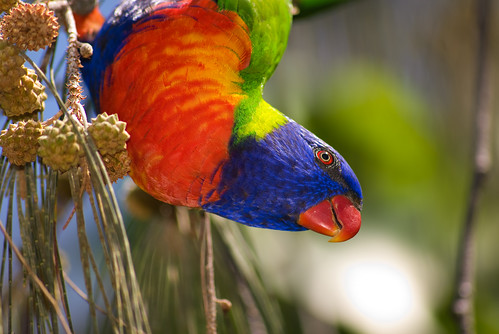 Rainbow Lorikeet. Image by Doug_75Rainbow lorikeets are becoming less common on the Gold Coast, as development takes away their habitat and food sources.
Rainbow Lorikeet. Image by Doug_75Rainbow lorikeets are becoming less common on the Gold Coast, as development takes away their habitat and food sources.
Staff at Currumbin Wildlife Sanctuary say the number of rainbow lorikeets coming to their twice daily feeding sessions has dropped sharply.
The sanctuary's Clancy Hall says the numbers of lorikeets visiting the sanctuary provide a good indication of numbers in the wild.
"We've been feeding the lorikeets here for decades and we see a direct relation between how many lorikeets are here and what's out there in the wild."
She says that while lorikeet numbers fluctuate with season, there has been a steady decline over the last 15 years.
The movements and populations of lorikeets are directly related to food sources.
"To have a large population of lorikeets you also need a large amount of food and with habitat destruction the way it is in South East Queensland unfortunately there's just not enough food in this immediate area to sustain large numbers," Clancy says.
"You only have to drive from here to Brisbane to see the amount of trees that are missing and that's what keeps lorikeets around - flowering eucalypts."